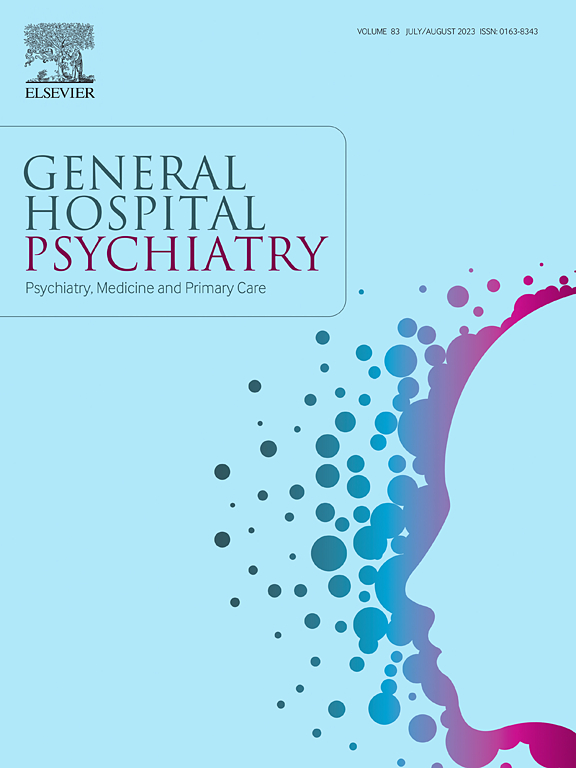抑郁症的催乳素水平:系统回顾和荟萃分析
IF 3.7
2区 医学
Q1 PSYCHIATRY
引用次数: 0
摘要
抑郁症可以通过激活身体的应激反应和释放皮质醇等应激激素来影响催乳素(PRL)水平,从而破坏正常的催乳素调节。PRL在多种生理系统中发挥作用,包括生殖、代谢、免疫调节和神经发生。以往关于抑郁症患者PRL水平的研究得出了相互矛盾的结果。本荟萃分析旨在评估抑郁症患者与健康对照者的PRL浓度。方法本系统评价和荟萃分析遵循系统评价和荟萃分析首选报告项目(PRISMA)指南。在PubMed、Scopus、Web of Science、Embase、PsycINFO、CINAHL、ProQuest、Science Direct和谷歌Scholar等多个数据库中进行了全面的检索,截止到2024年。采用Review Manager 5.3、Jamovi和Open Meta Analyst软件计算标准均差(SMD),评估异质性、发表偏倚(通过漏斗图和Egger检验)、亚组分析、敏感性分析和Meta回归。结果16项研究共纳入1492名患者(776名抑郁症患者和716名对照组),符合血清或血浆PRL的纳入标准。该荟萃分析表明,抑郁症患者和对照组之间血清或血浆PRL的SMD具有统计学意义,合并SMD为0.44 (95% CI: - 0.20至0.68,p = 0.0003)。结论:本荟萃分析发现抑郁症患者血清或血浆PRL水平存在统计学差异。进一步的研究需要探索PRL作为抑郁症诊断或严重程度的生物标志物的潜力,以及它的治疗意义。此外,研究抑郁症中PRL失调的潜在机制可能会导致新的治疗策略的发展。本文章由计算机程序翻译,如有差异,请以英文原文为准。
Prolactin levels in depressive disorders: A systematic review and meta-analysis
Introduction
Depression can impact prolactin (PRL) levels by activating the body's stress response and releasing stress hormones like cortisol, which disrupt normal PRL regulation. PRL plays a role in various physiological systems, including reproduction, metabolism, immune regulation, and neurogenesis. Previous studies on PRL levels in depressive patients have yielded contradictory results. This meta-analysis aims to evaluate PRL concentrations in depressive patients versus healthy controls.
Methods
This systematic review and meta-analysis followed the Preferred Reporting Items for Systematic Reviews and Meta-Analyses (PRISMA) guidelines. A comprehensive search was conducted across multiple databases, including PubMed, Scopus, Web of Science, Embase, PsycINFO, CINAHL, ProQuest, Science Direct, and Google Scholar, up to 2024. Review Manager 5.3, Jamovi, and Open Meta Analyst software were utilized to calculate the standard mean difference (SMD) and assess heterogeneity, publication bias (via funnel plots and Egger's test), subgroup analysis, sensitivity analysis, and meta-regression.
Results
Sixteen studies with a combined population (n) of 1492 (776 depressive disorder patients and 716 controls) met the inclusion criteria for serum or plasma PRL. This meta-analysis indicates a statistically significant SMD in serum or plasma PRL between depressed patients and controls, with a pooled SMD of 0.44 (95 % CI: - 0.20 to 0.68, p = 0.0003).
Conclusions
This meta-analysis found a statistically significant difference in serum or plasma PRL levels between individuals with depressive disorders. Further research is warranted to explore the potential of PRL as a biomarker for depression diagnosis or severity, as well as its therapeutic implications. Additionally, investigating the underlying mechanisms of PRL dysregulation in depression may lead to the development of novel treatment strategies.
求助全文
通过发布文献求助,成功后即可免费获取论文全文。
去求助
来源期刊

General hospital psychiatry
医学-精神病学
CiteScore
9.60
自引率
2.90%
发文量
125
审稿时长
20 days
期刊介绍:
General Hospital Psychiatry explores the many linkages among psychiatry, medicine, and primary care. In emphasizing a biopsychosocial approach to illness and health, the journal provides a forum for professionals with clinical, academic, and research interests in psychiatry''s role in the mainstream of medicine.
 求助内容:
求助内容: 应助结果提醒方式:
应助结果提醒方式:


